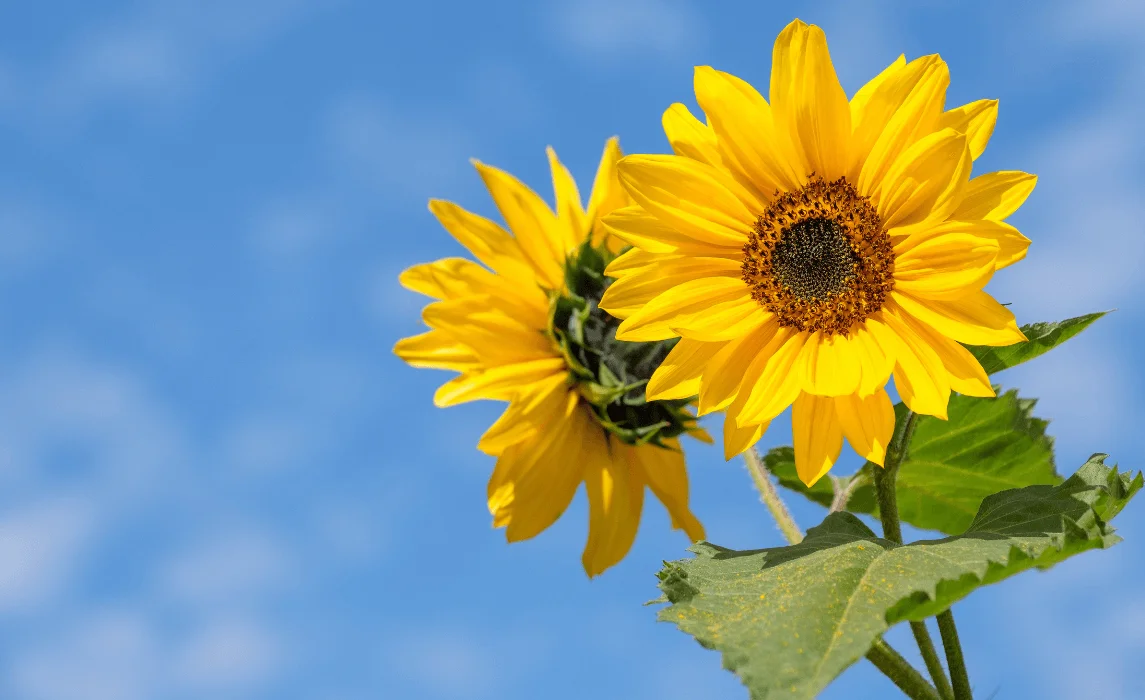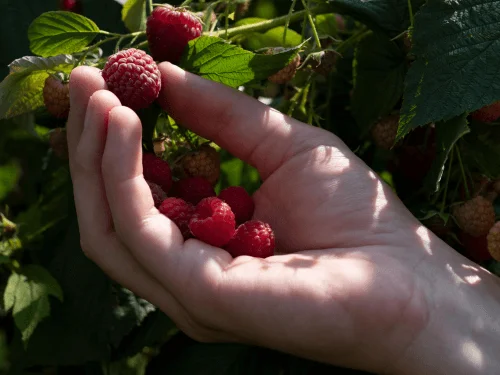Sunflower Companion Plants to Help You Grow the Best Sunflowers
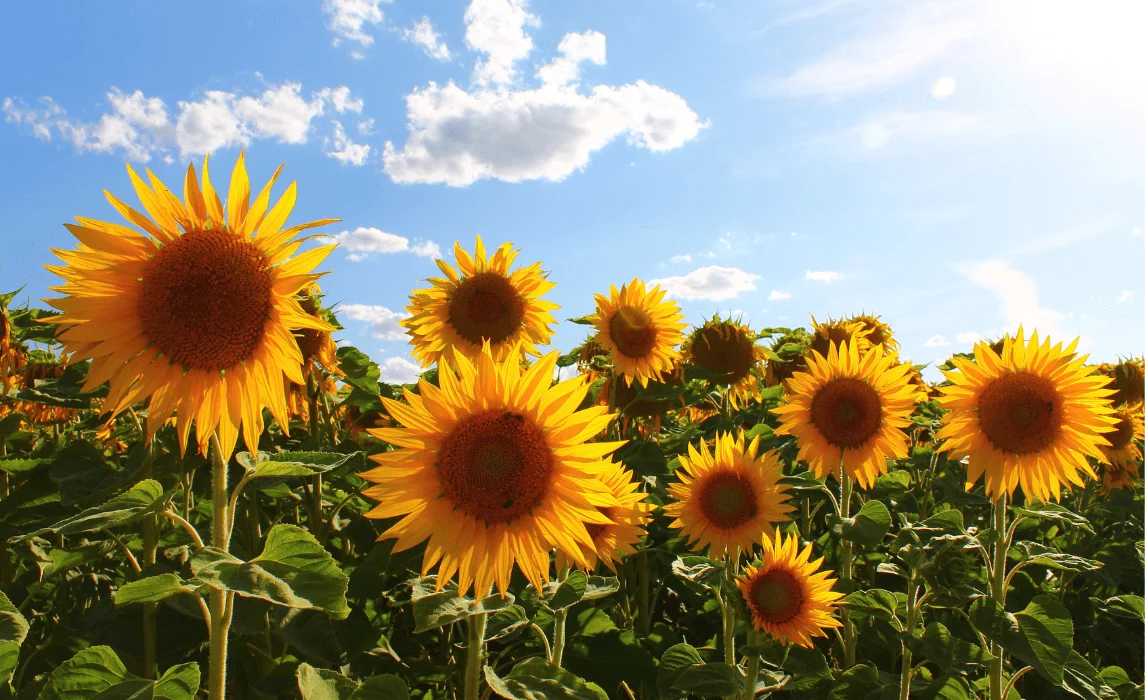
1. Can I grow fruit trees in small gardens or pots?
Yes! Many dwarf fruit trees and container-friendly varieties are perfect for small gardens or patios. Trees in pots can include citrus trees, figs, and dwarf apple trees. Using containers allows you to control soil, water, and temperature more easily, making it possible to grow fruit even in northern climates. These trees are especially useful if you want fast-growing trees that produce fruit within a few years and don’t require a large orchard space.
2. What climate is best for fruit trees?
The climate plays a major role in fruit production. Cold-hardy trees like apples, pears, and plums survive in northern regions, including zone 3, while citrus trees, figs, and peaches thrive in warmer southern areas like Florida or Virginia. Some fruit trees may require protection from frost, while others can tolerate cold winters. Understanding your USDA zone and local conditions ensures your trees will grow healthy and produce fresh fruit consistently.
3. Where can I buy fruit trees online?
Many growers offer fruit trees for sale online, including bare root trees, grafted trees, and container-grown trees. Buying fruit trees online allows you to select from a wide range of fruit tree varieties suitable for your climate, including apples, pears, peaches, plums, citrus trees, and more. When purchasing, check for USDA zone compatibility, tree size, and health guarantees to ensure you receive a quality tree that will thrive in your garden.
1. What is the best way to grow raspberries?
Raspberries grow best when planted in a sunny garden with well-draining soil. You can start by planting bare-root or potted plants in early spring or late fall. Rows of raspberries should be spaced about 2 to 3 feet apart within a row and 8 feet between rows. Using a trellis or support system helps canes grow upright and promotes healthy berry production.
2. How do I plant raspberries?
When planting raspberries, place the crown of the plant 1 or 2 inches above the ground. For bare-root plants, spread the roots in a hole and cover gently with soil. For potted plants, plant at the same depth as they were in the container. Make sure each bush has space to spread so new shoots and suckers can grow without overcrowding. Raspberries are easy to grow, but giving them proper spacing and sunlight ensures your raspberry patch thrives.
3. When do raspberries grow fruit?
Raspberries are perennials, and the first year canes mostly focus on root and cane growth. Summer raspberries (summer-bearing) produce fruit on two-year-old canes, typically in early summer. Fall-bearing raspberries (everbearing) can produce a crop in the fall of the first year, and another in the following summer from the same primocanes. With proper care, a bush can produce fruit in both summer and fall, giving you fresh raspberries for pies, tarts, or eating straight from the garden.
1. Are black-eyed Susans perennials or annuals?
Rudbeckia hirta, the traditional black-eyed Susan, is a biennial or short-lived perennial that often acts like an annual due to self-seeding. Some cultivars like Rudbeckia fulgida are true perennials that return every year.
2. When do black-eyed Susans bloom?
They typically bloom from early summer to early fall, filling your garden with bright yellow petals and dark black eyes. Regular deadheading encourages continuous flowering throughout the season.
3. How do I plant black-eyed Susan seeds?
Scatter Rudbeckia hirta seeds directly on the soil surface and press them lightly, as they need light to germinate. Keep the soil moist, and seedlings will appear within 7–21 days.
4. Can I grow black-eyed Susans indoors or in containers?
Yes. You can grow black-eyed Susans in containers indoors or outdoors. Use a regular seed starting mix, ensure proper drainage, and place them in a sunny location for maximum blooms.
Sunflowers are powerful partners in your vegetable garden. When you plant sunflowers alongside the right companion plants, you create a natural balance that improves soil health, attracts pollinators, and even deters pests.
This gardening method, called companion planting, is all about teamwork. Some plants protect sunflowers from harmful insects, while others benefit from the shelter, shade, or nutrients that these tall blooms provide.
In this guide, you’ll learn the 10 best sunflower companion plants, plus which plants to avoid due to allelopathic effects (when one plant releases chemicals that affect another’s growth). Whether you grow sunflowers in pots or a full vegetable garden, this list will help you make the most of their sunny potential.
.webp)
1. Cucumbers: The Best Companion Plant to Grow with Sunflowers
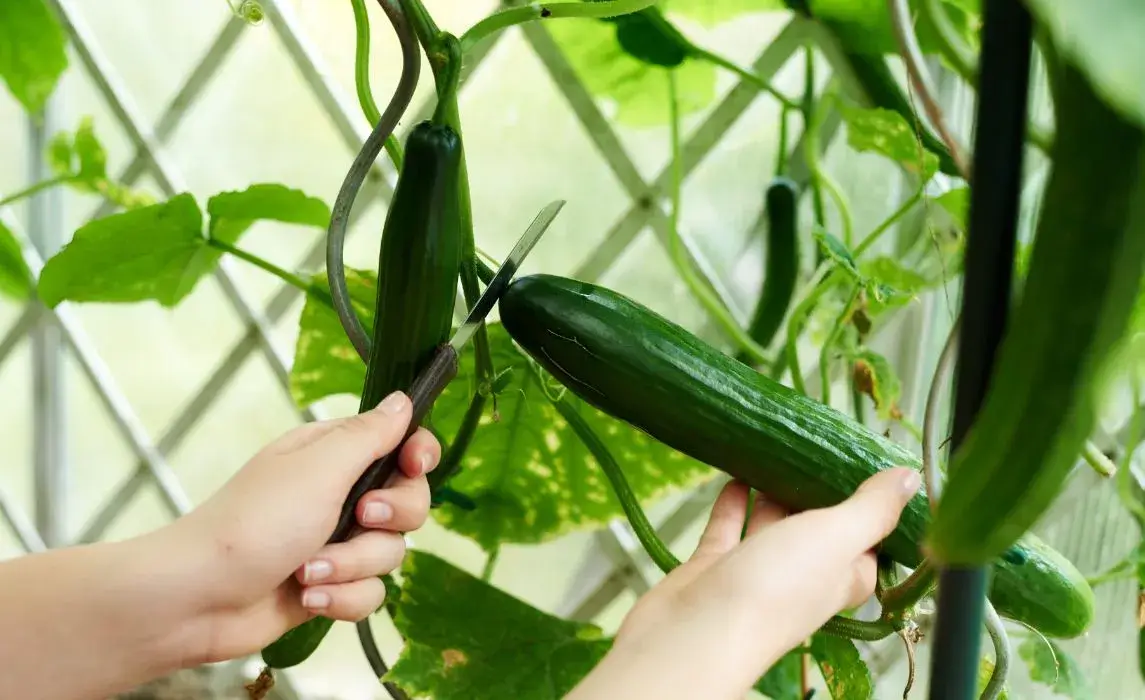
Cucumbers are one of the best companion plants for sunflowers. Their long vines appreciate the natural shade and vertical support sunflowers provide, while cucumber leaves act as living mulch, keeping the soil cool and moist.
Together, these two make a perfect team for hot summer gardens. The sunflower plant grows upward, and the cucumber spreads out below — maximizing your garden’s space while improving soil moisture retention.
How to plant cucumbers with sunflowers:
- Keep a spacing of 12–18 inches between plants.
- Let cucumber vines climb sunflower stalks gently, avoiding tight wrapping.
- Water consistently to maintain even soil moisture.
Why it works:
Tall sunflowers act as living trellises while cucumbers create ground cover. This keeps weeds down and moisture in — a win-win for any vegetable garden.
2. Tomatoes: A Strong Sunflower Companion in the Vegetable Garden

Tomatoes and sunflowers thrive under similar growing conditions — full sun, warm soil, and regular watering. When planted together, sunflowers act as a natural windbreak, protecting delicate tomato stems and leaves from damage.
Both attract bees and beneficial insects, boosting pollination rates across your garden. However, since both plants grow tall, you’ll want to position sunflowers on the north side so they don’t cast too much shade.
How to grow tomatoes with sunflowers:
- Space plants about 2 feet apart.
- Use compost-rich soil for both crops.
- Water deeply at the roots to prevent fungal issues.
Why it works:
Sunflowers defend, tomatoes flourish — and your vegetable garden becomes a pollinator paradise.
3. Carrots: Deep-Rooted Sunflower Companion Plants
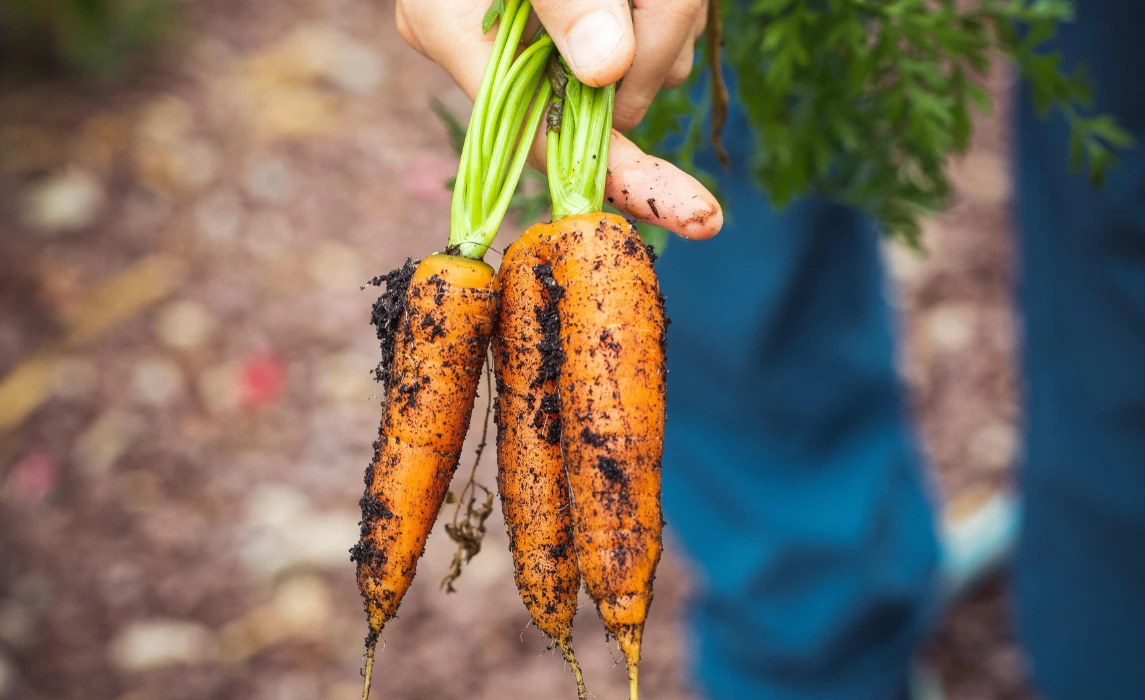
Carrots make a wonderful sunflower companion plant because both occupy different layers of the soil. Sunflower roots grow deep and help aerate the soil, while carrots grow straight down, benefiting from that loosened texture.
Carrots also appreciate the mild shade sunflowers cast, which helps prevent their roots from drying out during the hottest part of the day.
How to plant carrots with sunflowers:
- Sow carrot seeds 6–8 inches from sunflower stems.
- Keep soil consistently moist until germination.
- Thin seedlings early to prevent crowding.
Why it works:
Vertical harmony — one grows high, one grows low. This pairing maximizes garden space and improves soil structure for better yields.
4. Squash: Moisture-Loving Companions for Sunflowers
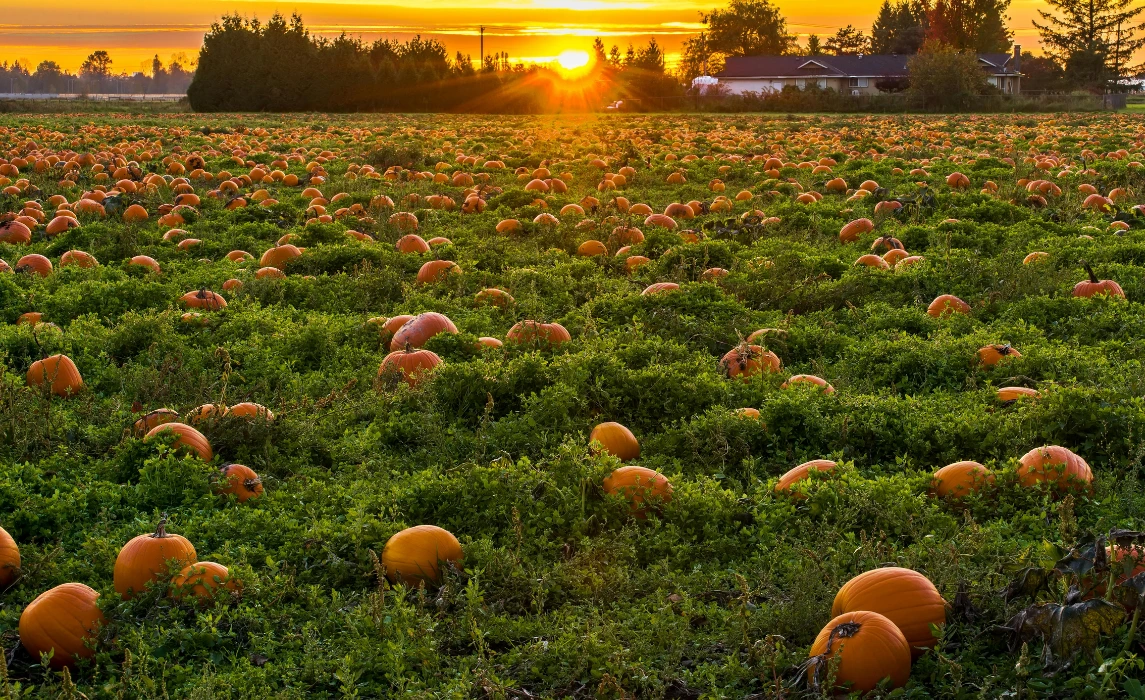
Squash and zucchini are excellent sunflower companion plants for gardeners who want lush foliage and fruitful harvests. Their wide leaves protect the soil from evaporation, helping the sunflower plant conserve water.
In turn, sunflowers attract bees that improve squash pollination, increasing fruit set and yield.
How to grow squash with sunflowers:
- Plant squash 18–24 inches away.
- Provide ample space for leaves to spread.
- Water once or twice a week deeply.
Why it works:
Together, they maintain soil moisture, attract pollinators, and prevent overheating — all essential for a healthy vegetable garden.
5. Beans: The Nitrogen-Fixing Sunflower Companion Plant
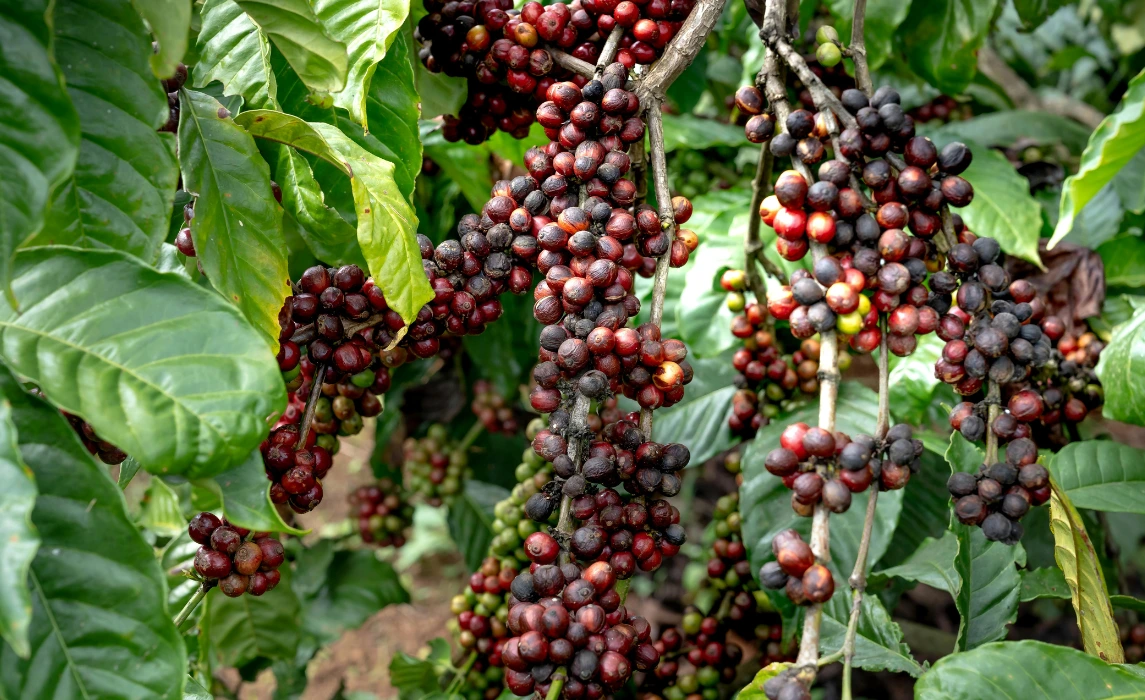
Beans, especially bush beans, are among the best sunflower companion plants because they fix nitrogen in the soil — a vital nutrient that supports sunflower growth.
However, avoid pole beans, which climb aggressively and may compete with the tall sunflower plant for sunlight and space.
How to plant beans with sunflowers:
- Use bush beans, spacing them 10–12 inches apart.
- Keep the soil well-drained and rich in organic matter.
- Harvest beans regularly to encourage more pods.
Why it works:
Beans enrich the soil while sunflowers attract beneficial insects. Together, they strengthen your vegetable garden’s overall ecosystem.
6. Corn: The Tall Companion Plant to Grow with Sunflowers
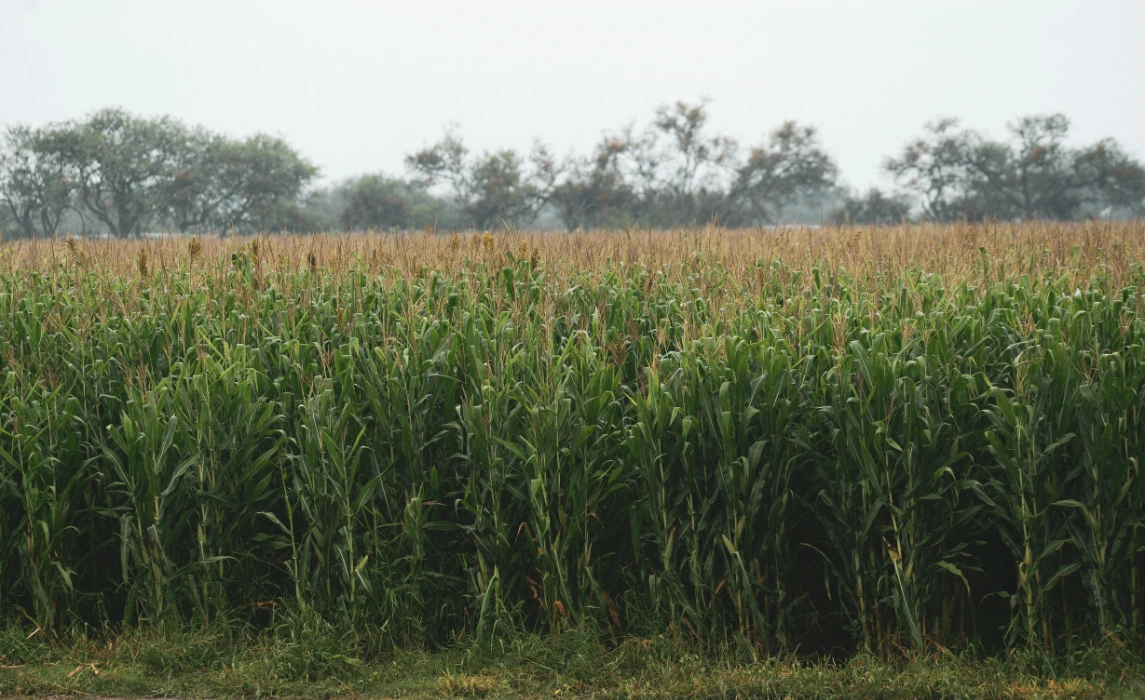
Corn and sunflowers share similar needs: full sun, warmth, and fertile soil. When planted together, they form a wind-resistant barrier that shelters smaller crops nearby.
The bright sunflower blooms also attract pollinators, which help corn silk pollinate more effectively. This natural teamwork increases kernel formation and overall yield.
How to plant corn with sunflowers:
- Space rows 2–3 feet apart to prevent crowding.
- Plant corn first so it establishes before sunflowers grow tall.
- Water weekly during dry spells.
Why it works:
They complement each other vertically and visually, creating a productive and beautiful vegetable garden border.
7. Onions: Pest-Repelling Sunflower Companion Plants
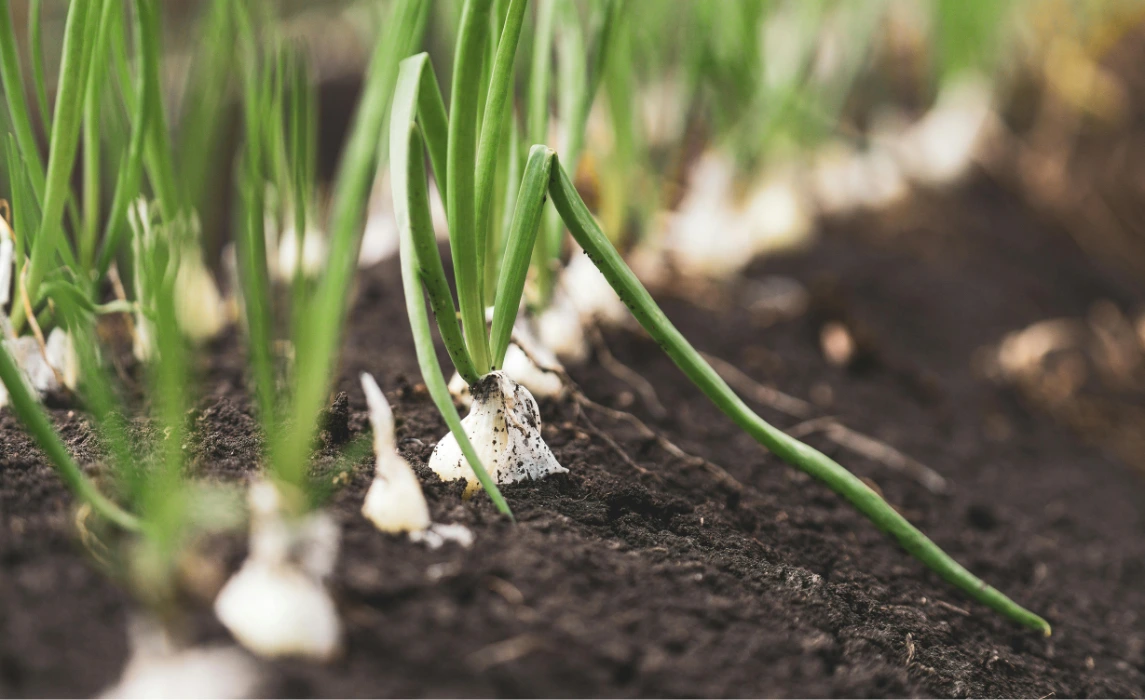
Onions are small but mighty allies. Their strong aroma deters many common sunflower pests such as aphids, beetles, and grasshoppers.
Because they have shallow roots, onions don’t compete with sunflower roots, making them an ideal companion plant for gardeners who want pest control without chemical sprays.
How to grow onions with sunflowers:
- Plant onion sets 8 inches from sunflower stalks.
- Ensure the soil is well-drained.
- Harvest when tops fall over naturally.
Why it works:
Onions defend, sunflowers shelter — it’s natural pest management at its finest.
8. Marigolds: The Colorful Pest-Control Companion Plant for Sunflowers
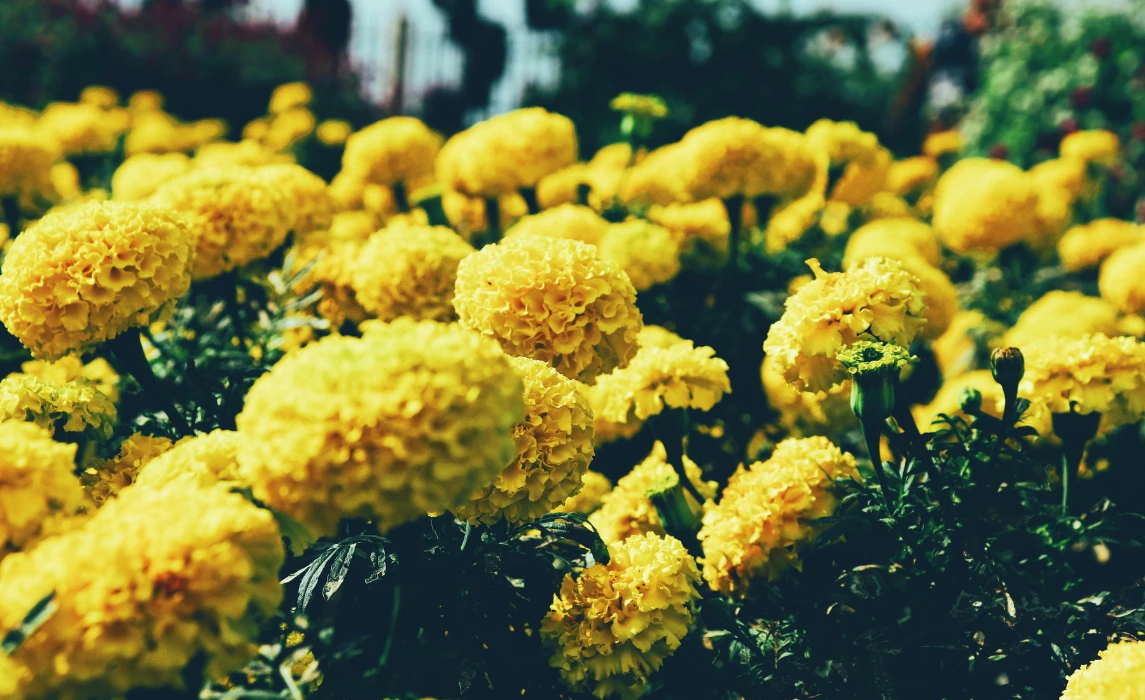
Marigolds and sunflowers are iconic partners. Marigolds contain compounds that repel nematodes, aphids, and whiteflies, protecting nearby sunflower plants and vegetables.
Their long blooming season also ensures continuous color in your vegetable garden. Plus, they attract ladybugs and hoverflies — both natural predators of garden pests.
How to plant marigolds with sunflowers:
- Scatter marigolds around sunflower bases.
- Deadhead old flowers to promote more blooms.
- Keep the soil moderately moist.
Why it works:
Marigolds beautify your garden while boosting sunflower health — a perfect sunflower companion plant for both looks and function.
9. Lavender: Fragrant and Pollinator-Friendly Sunflower Companion
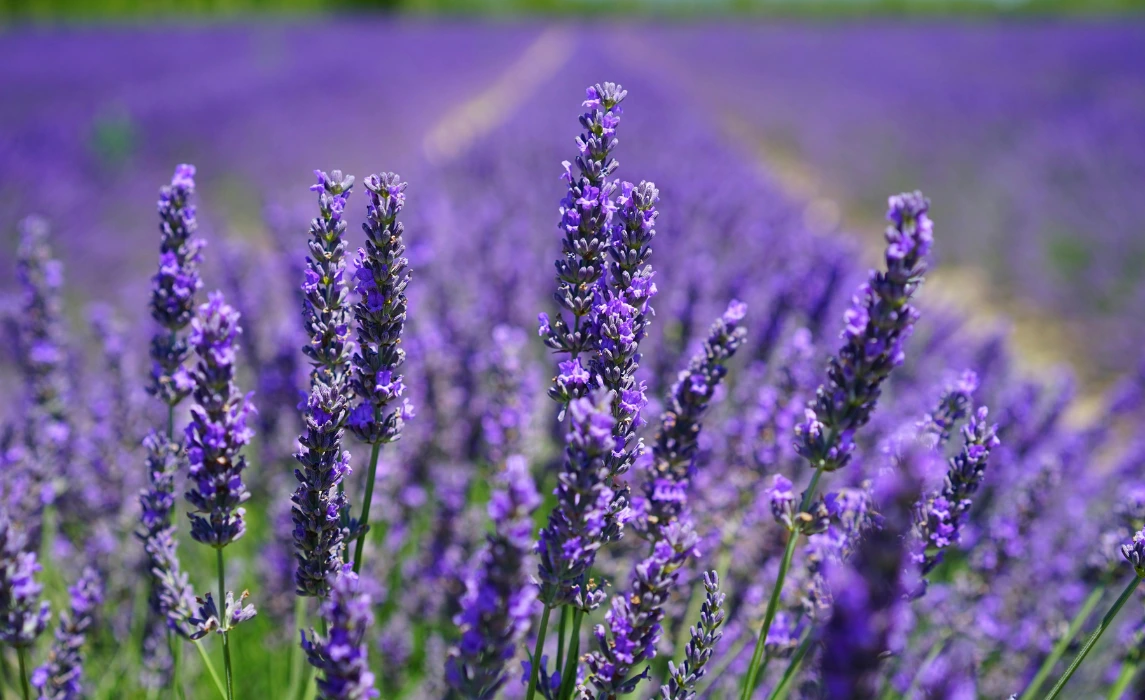
Lavender makes a lovely sunflower companion that combines fragrance, function, and beauty. It draws in bees and butterflies while repelling mosquitoes and moths that may damage your plants.
When used along borders, lavender also helps define your garden space and reduce pest movement between crops.
How to plant lavender with sunflowers:
- Place lavender along the garden’s edges for airflow.
- Use well-drained soil and avoid overwatering.
- Prune after flowering to maintain shape.
Why it works:
Lavender and sunflowers attract pollinators from sunrise to sunset, boosting biodiversity and garden charm.
10. Garlic: The Natural Repellent Companion Plant for Sunflowers

Garlic is one of the most underrated companion plants for sunflowers. It releases natural sulfur compounds that repel harmful insects like aphids, spider mites, and beetles.
Because garlic roots are shallow, they don’t compete for space or nutrients with deep-rooted sunflower plants. It’s a great addition for pest-free, organic gardening.
How to grow garlic with sunflowers:
- Plant cloves 4–6 inches apart near sunflower stems.
- Water lightly and apply mulch.
- Harvest when leaves turn brown and dry.
Why it works:
Garlic protects, sunflowers support — this classic combination keeps pests under control while enhancing your garden’s health naturally.
⚠️ Plants to Avoid When You Plant Sunflowers (Allelopathic Plants and Conflicts)
Not all plants get along with sunflowers. Some may compete for sunlight or suffer from the allelopathic effect — when one plant releases natural chemicals that inhibit another’s growth.
Here are a few plants to avoid near sunflowers:
1. Potatoes
Potatoes and sunflowers attract similar pests, especially aphids and beetles. Planting them together increases the risk of infestation.
2. Pole Beans
While bush beans are excellent companions, pole beans are not. They climb aggressively and can tangle with sunflower stalks, competing for light and air.
3. Fennel and Other Allelopathic Plants
Fennel releases strong chemicals that can stunt sunflower growth and affect nearby vegetables. Keep allelopathic plants far from your sunflower garden.
4. Shade-Loving Herbs
Herbs like basil and parsley prefer shade and mild temperatures, making them poor partners for sun-drenched sunflowers.
Quick Tip:
To minimize conflicts, always rotate crops yearly and avoid planting sunflowers in the same spot every season to prevent soil depletion.
Frequently Asked Questions
Q1: What are sunflower companion plants?
A: Sunflower companion plants are crops or flowers that grow well alongside sunflowers. They either benefit from the sunflower’s height, attract pollinators, or help repel pests. Examples include cucumbers, beans, marigolds, garlic, and squash. These best companion plants for sunflowers help create a healthier, more balanced vegetable garden.
Q2: Why should I plant sunflowers with companion plants?
A: Companion planting helps sunflowers grow stronger while improving your garden’s ecosystem. Some plants, like beans, fix nitrogen into the soil. Others, like onions and garlic, naturally repel harmful insects. Together, these sunflower companion plants enhance soil health, attract bees, and keep your garden pest-free — without chemicals!
Q3: What plants should I avoid planting with sunflowers?
A: Some plants don’t mix well with sunflowers. Avoid:
- Potatoes – attract the same pests as sunflowers.
- Pole Beans – compete for sunlight and space.
- Fennel and other allelopathic plants – release chemicals that inhibit growth.
- Basil and parsley – struggle with too much heat and shade.
These are plants to avoid because they can harm your sunflower plant’s growth or attract unwanted pests.
Q4: What does “allelopathic” mean in gardening?
A: The term allelopathic refers to plants that release natural chemicals (called allelochemicals) into the soil or air that affect nearby plant growth. For example, fennel and black walnut trees are allelopathic plants — they can stunt the growth of sensitive neighbors like sunflowers or beans. Always research before planting them together.
Q5: Can I plant sunflowers in a vegetable garden?
A: Yes! Sunflowers in vegetable gardens are fantastic companions. They attract pollinators that improve fruit yields for vegetables like tomatoes, cucumbers, squash, and beans. Their tall stalks also act as windbreaks, protecting smaller crops from damage. Just remember to plant sunflowers on the north side so they don’t block sunlight from shorter plants.
Q6: How close should I plant companion plants to sunflowers?
A: It depends on the type of companion plant:
- Small herbs or root crops (carrots, onions, garlic): 6–8 inches away.
- Medium crops (beans, cucumbers): 12–18 inches away.
- Large crops (tomatoes, squash, corn): 2–3 feet away.
This spacing ensures good airflow and prevents allelopathic effects between plants.


